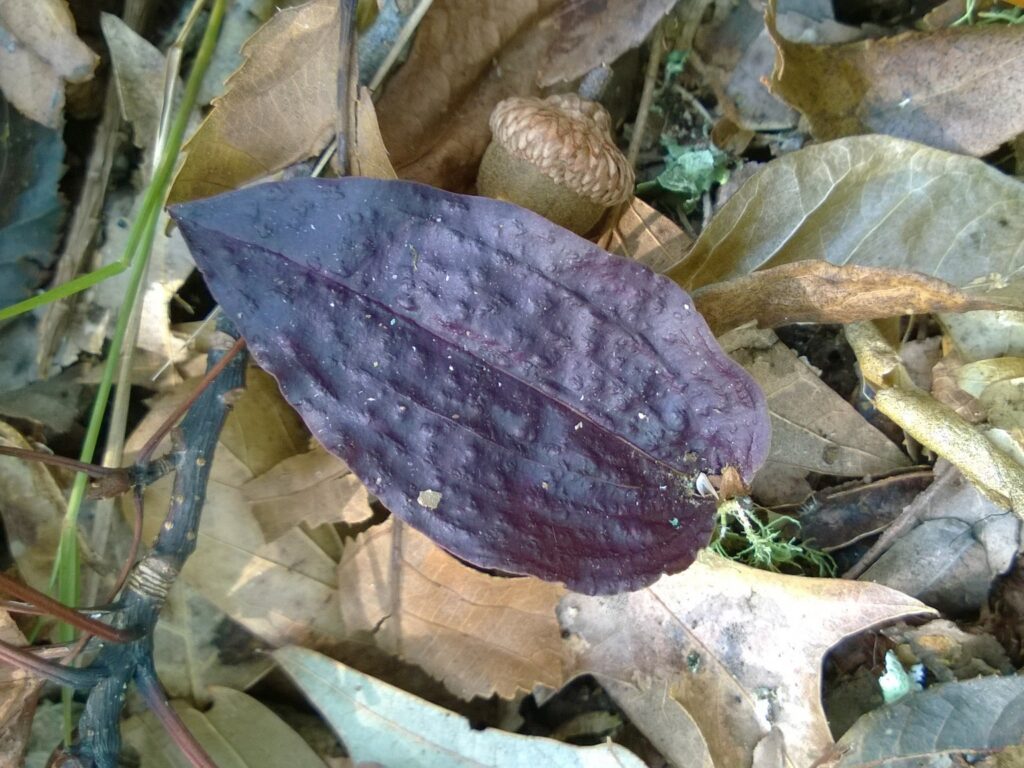
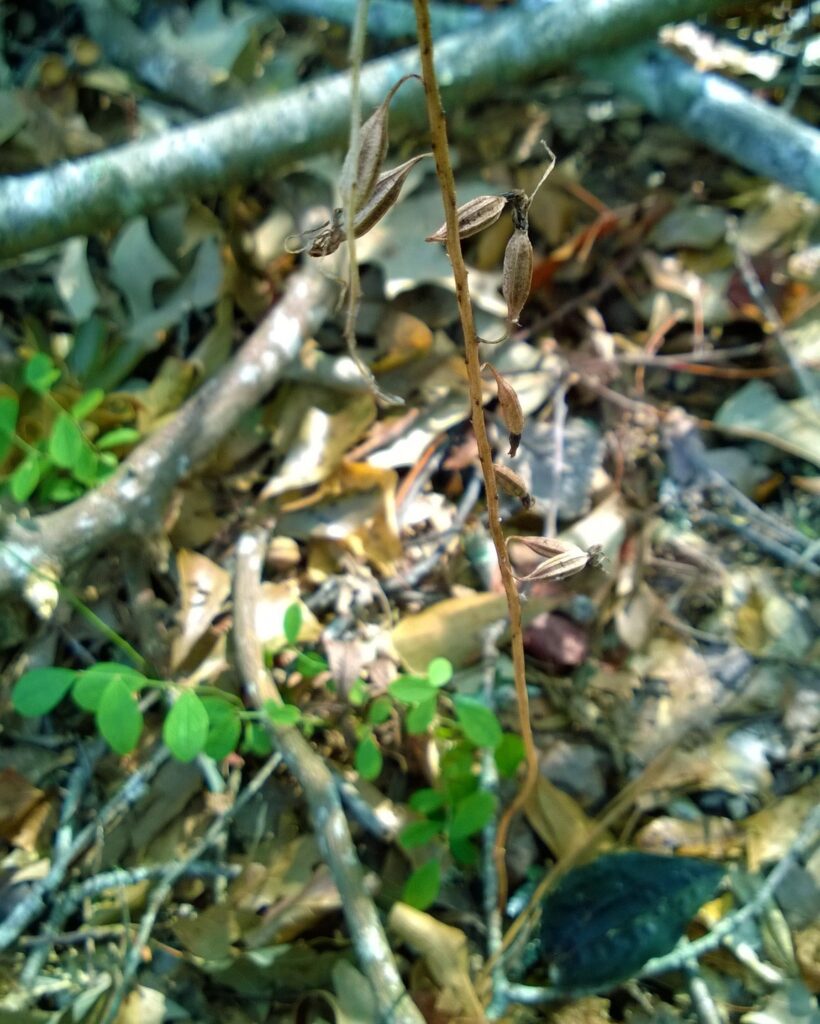
This week for Flora and Fauna Friday we have a common woodland Orchid most easily spotted by its evergreen winter foliage, Cranefly Orchid (Tipularia discolor).
Cranefly Orchid is a native Orchid found often across South Carolina where it grows on rich and moist forested upland soils. They are perennial and grow below the soil with spreading corms to form small stands of plants. These corms are edible but neither substantial nor particularly flavorful. Cranefly Orchids bloom in midsummer producing a foot and half tall stalk of flowers. This flower stalk is sparsely populated by five-petalled, cream-white, lanky and downturned blossoms. The flowers are named for their Cranefly-esque traits. (Craneflies, AKA Skeeter-Eaters, are large scrawny flies that superficially resemble giant Mosquitoes. More on them at a later date.) The flowers are pollinated by moths and mature into small urn-like seed pods. These tiny pods are filled with thousands of spore-like, nearly microscopic seeds. These nigh weightless seeds are dispersed by wind. The flower stalks dry and can remain through winter.
Cranefly Orchids are unique for their leaves. The leaves emerge in fall, persist through winter, and wither away before the plant blooms. A single leaf is produced per corm. The physical appearance of the leaf is unique as well. The leaves are teardrop shaped, roughly three inches long, and lay atop the leaf litter on the forest floor. They have parallel veins and often a bumpy appearance. The upper surface of the leaf is a dark green and its bumps are sometimes accented by amethyst spots. The underside of the leaf, by contrast, is a rich royal-purple and usually shiny. The purpose of this pigmentation is not fully understood. One hypothesis suspects the purple helps absorb the sparse winter light and infrared radiation from the soil to protect the frigid leaf from sun damage and heat the leaf to improve photosynthesis efficiency. Regardless, the Cranefly Orchid has found an interesting niche in our forest ecosystems. Rather that compete for light between the shadows of the summer canopy, it simply waits until winter and stores energy for the following summer.
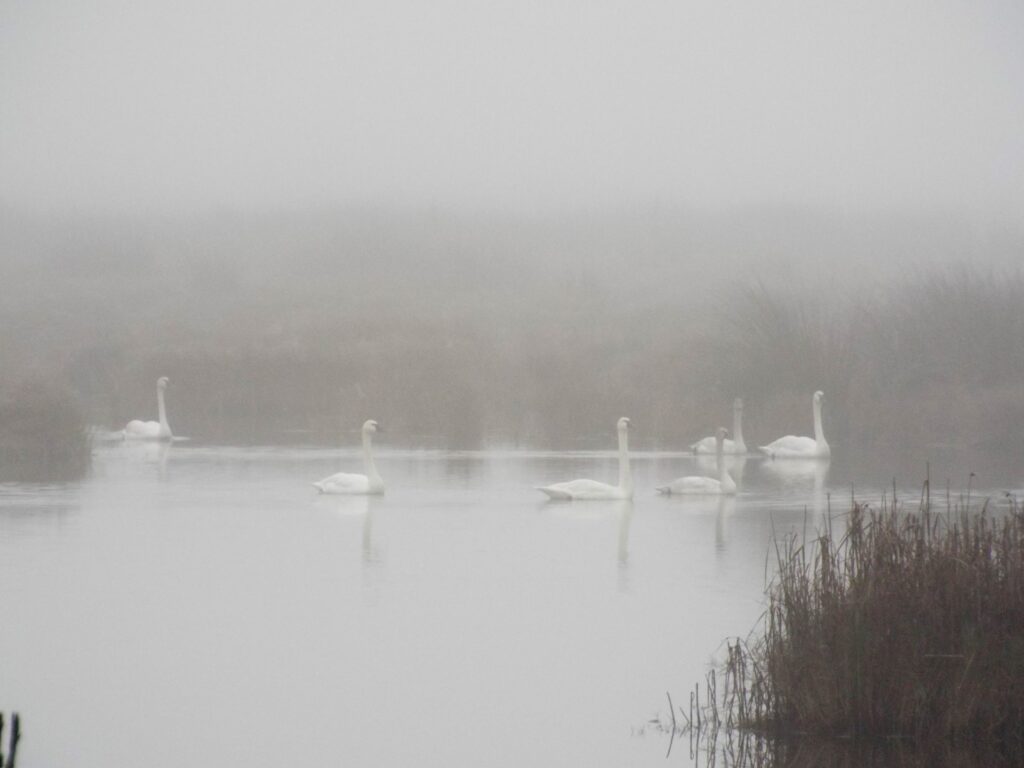
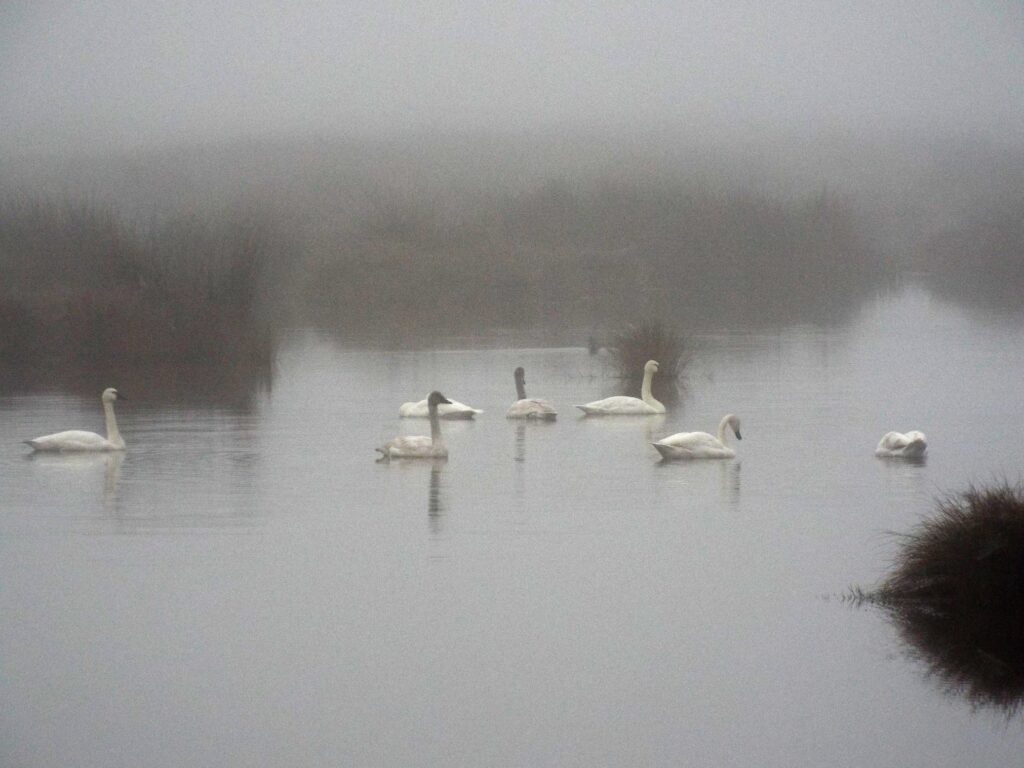

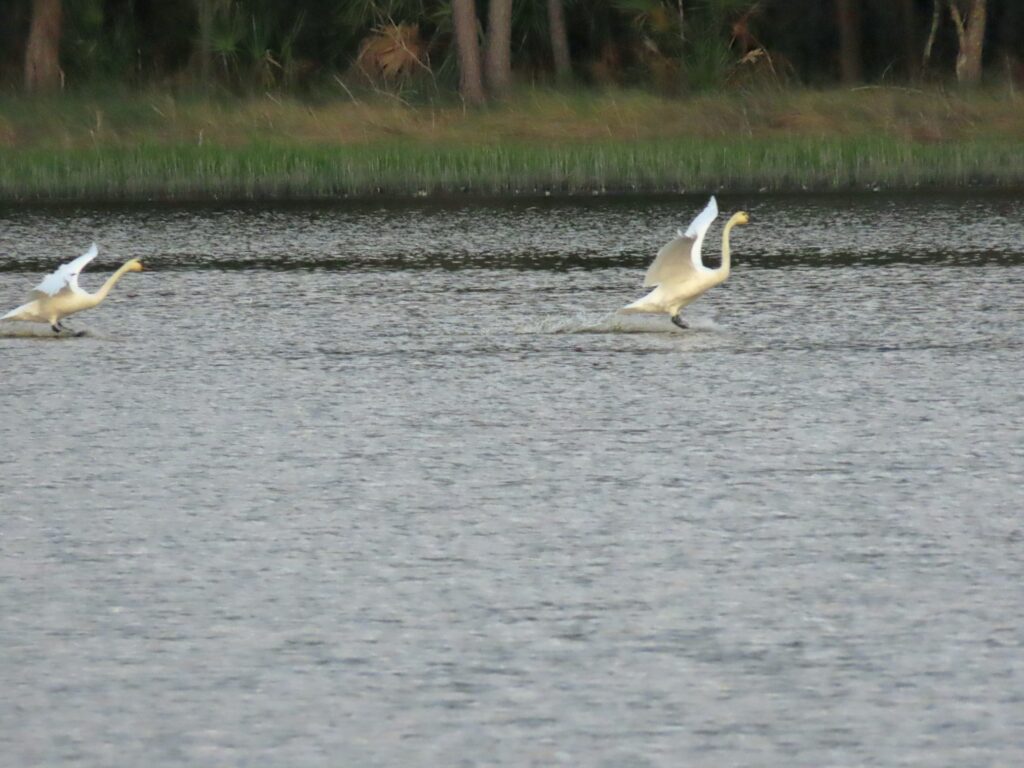
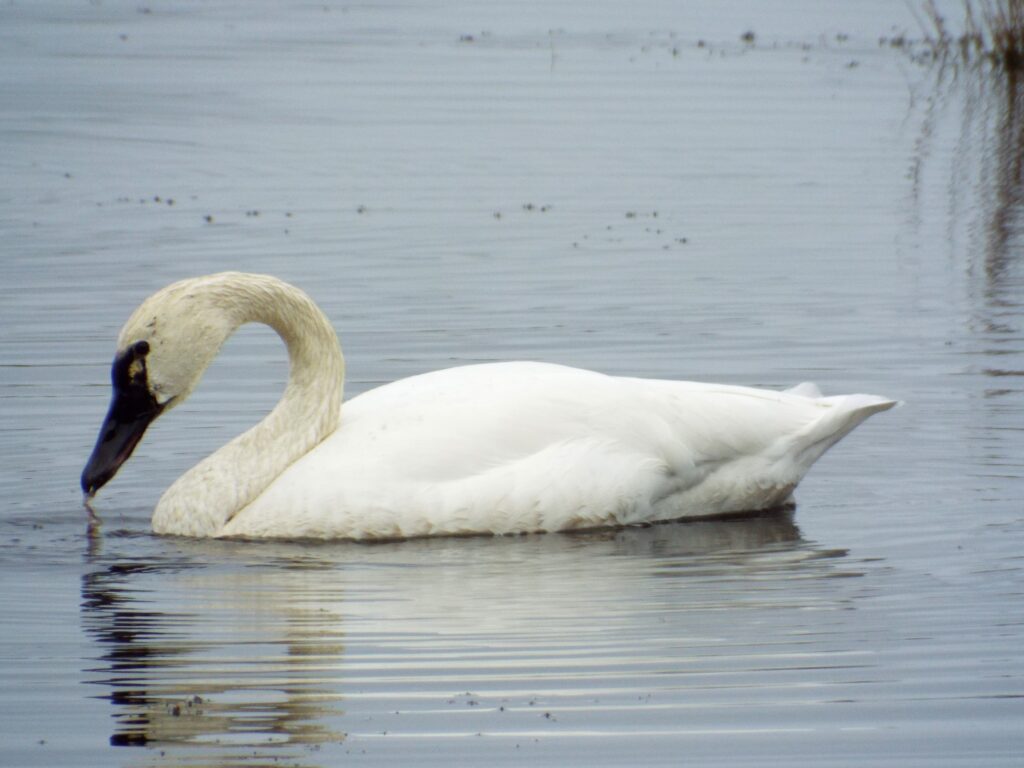
This week for Flora and Fauna Friday we have an oversized icy-white snowbird, the Tundra Swan (Cygnus columbianus).
Tundra Swans are tied with the Wild Turkey for the heaviest bird in South Carolina, sometimes tipping the scales at over 20 pounds. Their impressive five foot wingspan is nearly matched by their four to five foot length. Swans are unmistakable. Their general bigness and solid pearl-white plumage above sturdy black legs puts them in a category of waterfowl all their own. Within the swans we may perchance see three species: Mute Swan (C. olor), Trumpeter Swan (C. buccinator), and Tundra Swan. Tundra Swans are our only regular visitor but the others appear on occasion. The three species can be distinguished by their bill and their build. Mute Swans are native to Europe and the species you’ll see cruising around urban ponds. However, some have escaped into the wild and can occasionally come south to mingle with our Tundra swans. Mute Swans can be identified by their orange bill with a forehead hump. Trumpeter Swans are the largest waterfowl native to North America but only very very rarely come so far South as Edisto. Trumpeter Swans can be identified by their solid black bill and usually rusty head. Tundra Swans are significantly smaller on average than the other two but this size difference isn’t always obvious. Tundra Swans are best distinguished by a patch of saffron-yellow skin beside the eye. Tundra Swans spend the winter here in small flocks on the managed impoundments repurposed from historic rice fields. Here they feed on submerged vegetation alongside a myriad of ducks and the similarly sized American White Pelicans.
Swans are a waterfowl not often associated with the Lowcountry but every year we are visited by a humble caravan of the graceful fowl here in the ACE Basin. I’ve spent many a frigid January morning along the Edisto tiptoeing down a causeway before day breaks. Shuffling into place as the first light of dawn illuminates humidity hanging above an impounded marsh. With the earliest flicker of sunrise the Swans awaken. I am swept up by echoing exclamatory single syllable vibratos. As sunrise intensifies so does the sound and as the fog begins to evaporate the Tundra Swans materialize. Icebergs of white buoy and beacon above the dreary landscape of murky pools and lifeless reeds. They propel themselves effortless along the water with nary a ripple and move their slender necks with angelic elegance. Distant notes approach as a formation of Swans signal their own arrival. Wings flail like flags in a gale along a somehow stable fuselage. Like a flurry they descend to melt upon the water. The aviators kick out their landing gear – heels forward, wings wide – and ski to idle speed. Tundra Swans are by no means common in our state but we are blessed here in the ACE Basin to see them every year. I do not often find them on our Island, as their destination is often a short ways beyond the South Edisto River, but I relish the sight whenever I do.
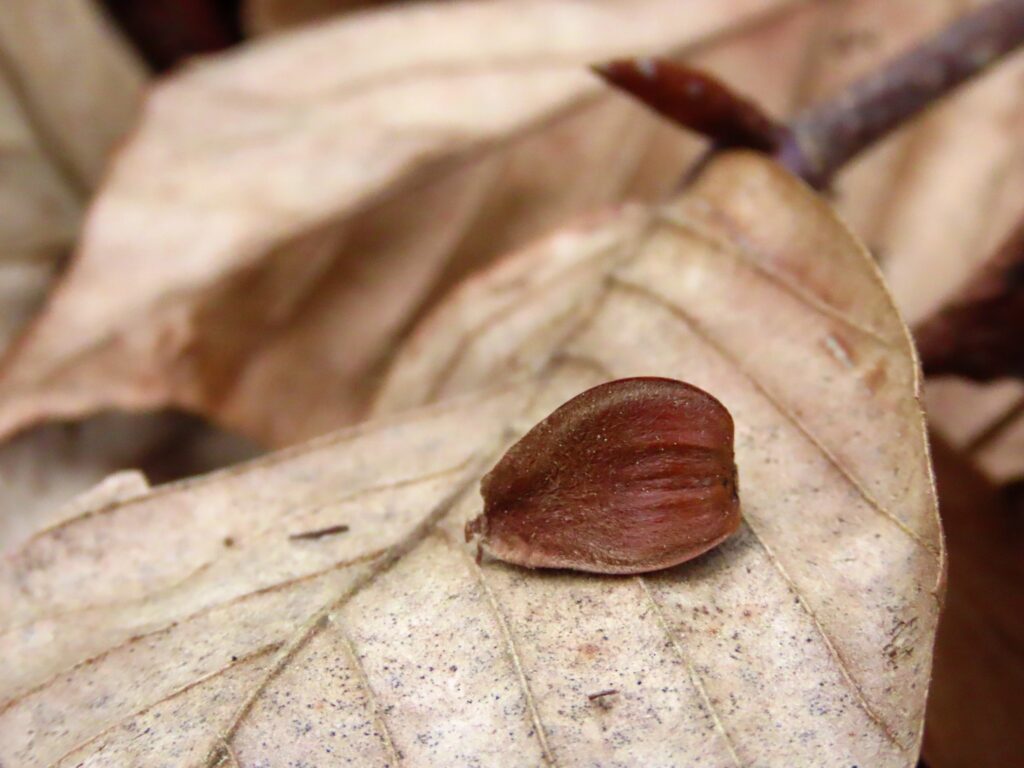
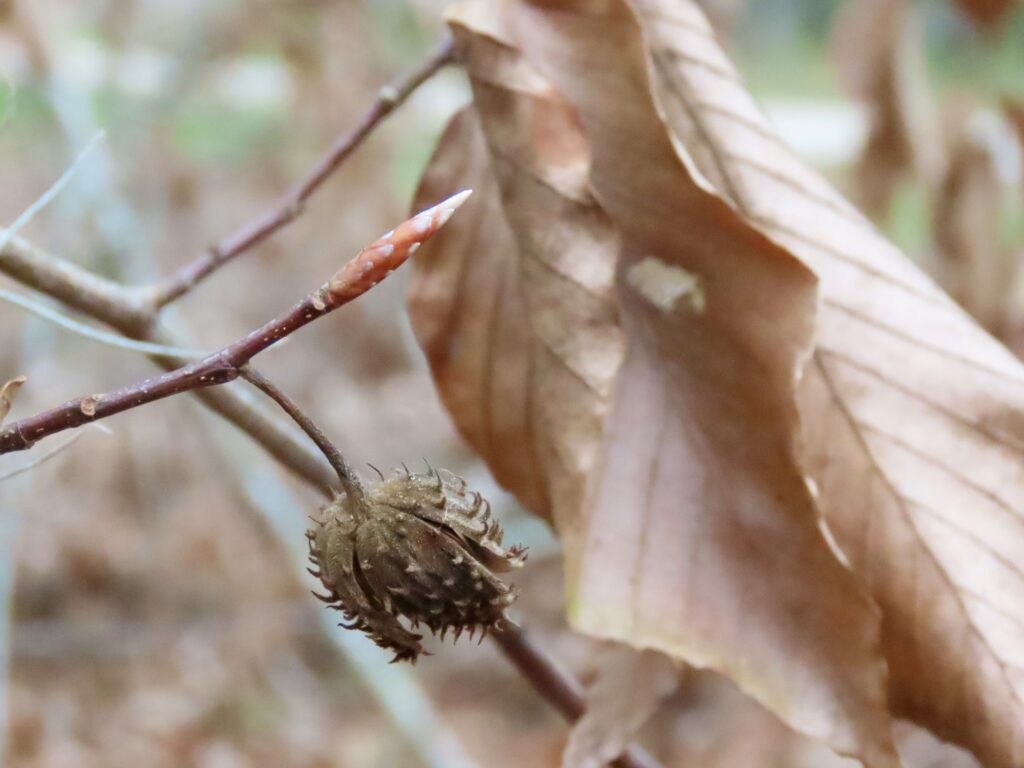
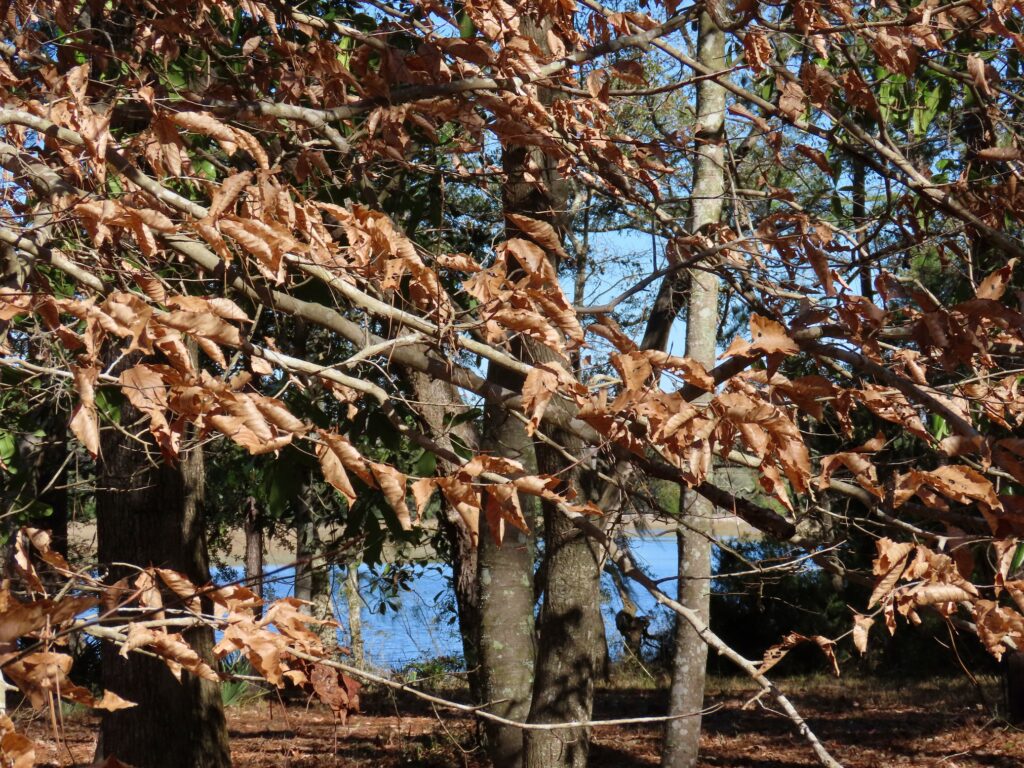
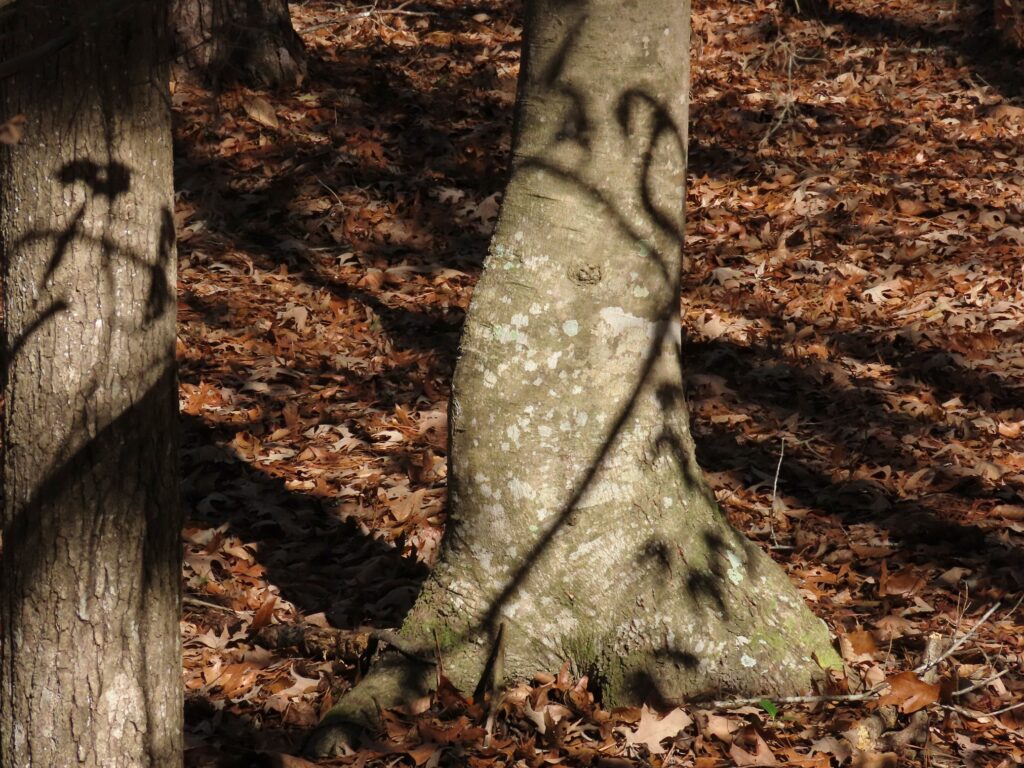
This week for Flora and Fauna Friday we have a thin porcelain-skinned nut-bearing tree, American Beech (Fagus grandifolia).
American Beech is a common tree in floodplain forests, where it relishes the moist soils rich in nutrition from periodic floods. Yet Beech does not grow well on the soggy soils of the bottomlands, sticking to the higher and drier soils of the upper floodplain. American Beech is a beautiful and unmistakable tree. Its marble-white bark puckers like goosebumps and wrinkles like muslin as it conforms like skin to its muscle furrowed trunk. This skin extends to shallow roots that often grow down over obstacles and up into a buttress. This bark in and of itself distinguishes the Beech from its Lowcountry surroundings on all but our whitest winter days. Yet on those scarce snowy mornings Beech still stands apart from its neighbors. American Beech is unique in that it holds onto its fall foliage until spring. Although thoroughly brown and devoid of life, last year’s leaves remain until new buds break. This makes Beeches easy to spot from the roadside on a frigid winter drive. Beyond the zombie leaves lies another novel feature, the bud. Beech buds are easy to ID as they are unusually long and slender, sometimes a full inch in length. These oversized buds break in fall to quickly produce a new twig with leaves. The leaves of American Beech are moderately large and elliptical with a dentate margin. Dentate leaves have a regularly toothed margin like the blade of a saw. American Beech also produces edible nuts. These nuts ripen inside a coarsely hairy pod that splits in four to dispose of the nuts within. Each pod contains two or three nuts and each nut is teardrop-shaped and triangular in cross-section.
Beech trees are a species known for strong mast reproduction. Mast reproduction is a phenomenon of many nut bearing trees and shrubs. Unlike plants that produce berries or other soft fruits, nut bearing trees do not want animals eating their fruit. When an animal eats a soft fruit, they eat the nutritious flesh around the seed and either discard the seed or swallow it whole. This helps spread the seeds of soft fruits and their parent plants encourage animals to eat them. When animals eat nuts, they crack the seed itself open and eat the embryo inside. This kills the seed and is the exact opposite of what the nut-bearing plant wants. To counteract this, some nut trees have developed mast reproduction. Mast reproduction works at the population scale with all trees in a population or region responding in unison to some environmental trigger. The type of trigger varies widely by species but all achieve the same end goal. When mast reproduction is triggered, all the trees in an area will produce a bumper crop of nuts. This unified seed production has several benefits: it improves the chances of cross-pollination in wind pollinated species, the individual plants can take full advantage of ideal growing conditions to maximize seed production, and most importantly the trees can overwhelm would-be seed eaters. This latter benefit falls within the predator saturation hypothesis and the strategy is ostensibly victory through attrition. By starving the seed eating animals of nuts on non-mast years, the plants can keep their predator’s populations relatively low. Then when the trees undergo mast reproduction, there just flat out aren’t enough squirrels, deer, mice, or turkeys to eat all the nuts before the next spring. Meaning a far higher proportion of seeds will survive to germinate than otherwise would have been possible.
American Beech can reach a considerable diameter and live for several centuries. However, few large Beech trees remain as they often grew on the most productive agricultural soils, which have long since been logged, and those that grew elsewhere were easily damaged by fire. Those large trees that do remain or those that have come up in the last century are invariably vandalized. Beech’s thin, smooth bark is seen by hikers and love-struck youths as a perfect canvas for carving. Carvings damage the thin layer of vascular cambium below the bark. Damage to this layer prevents that portion of the trunk from growing, causing the surrounding tissue to swell and callous in an attempt to heal the wound. On thin skinned trees like Beech, it can take years or even decades for these wounds to heal and even longer for callouses to disappear. A single carving is rarely a problem for a fully grown tree but trees on public parks or along hiking trails are often filleted to the point of infection. Each carving exposes the tree to infection and the wood of Beech is not particularly rot resistant. Meaning any carving may end up being the death nail for the tree.
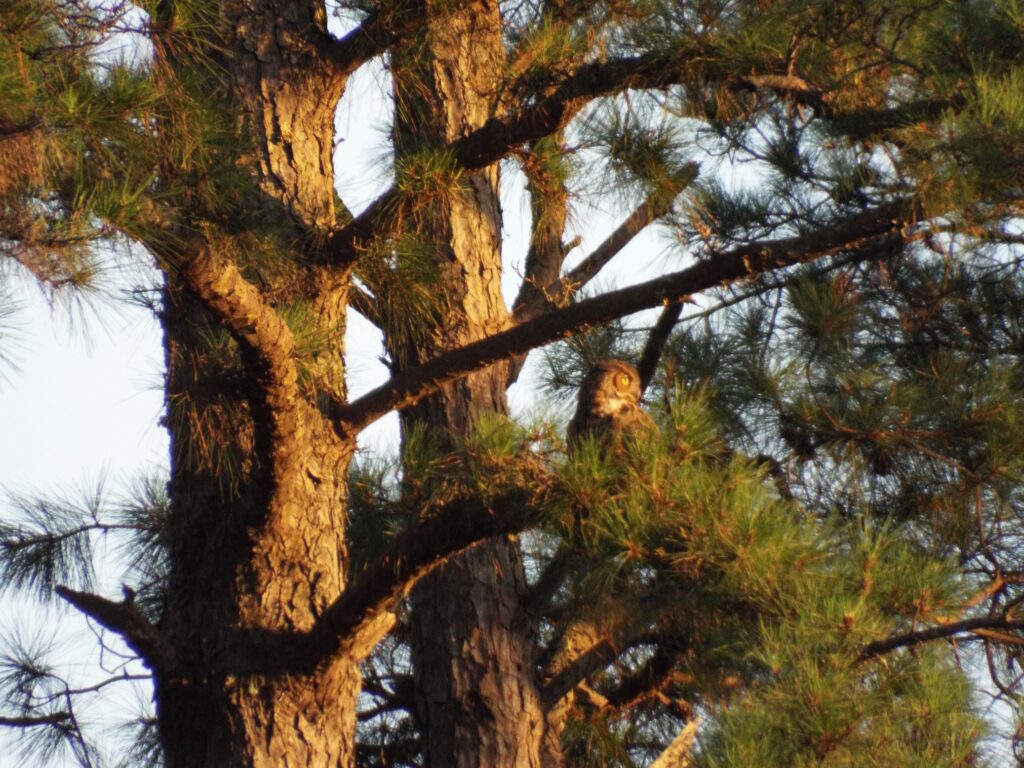
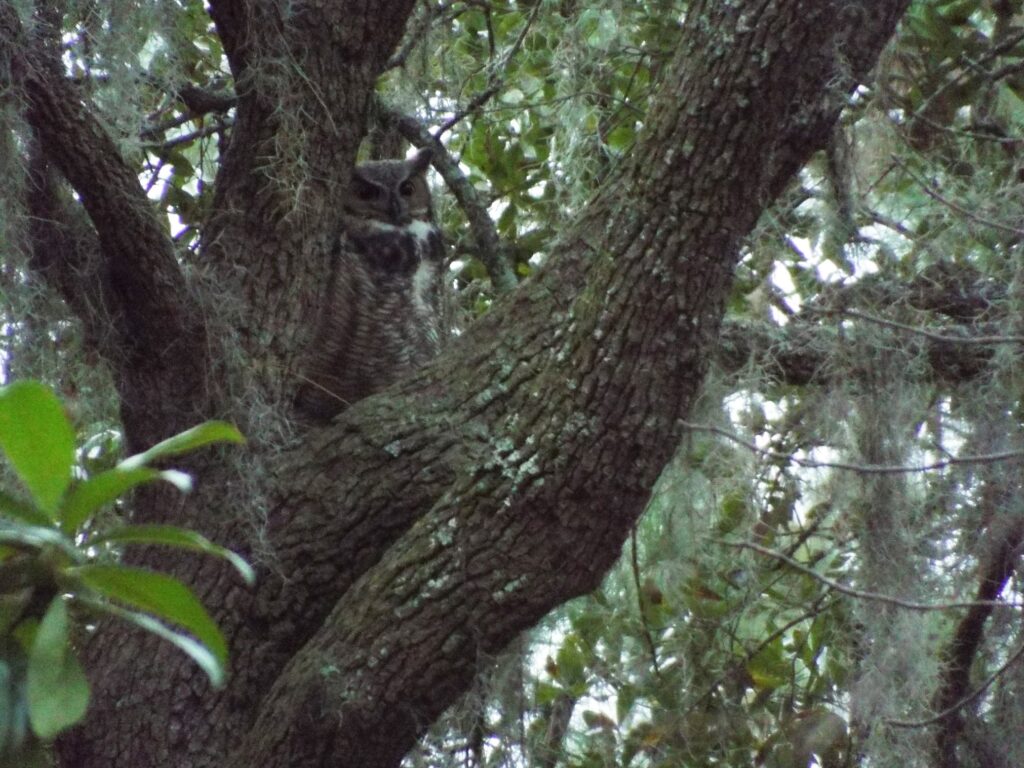
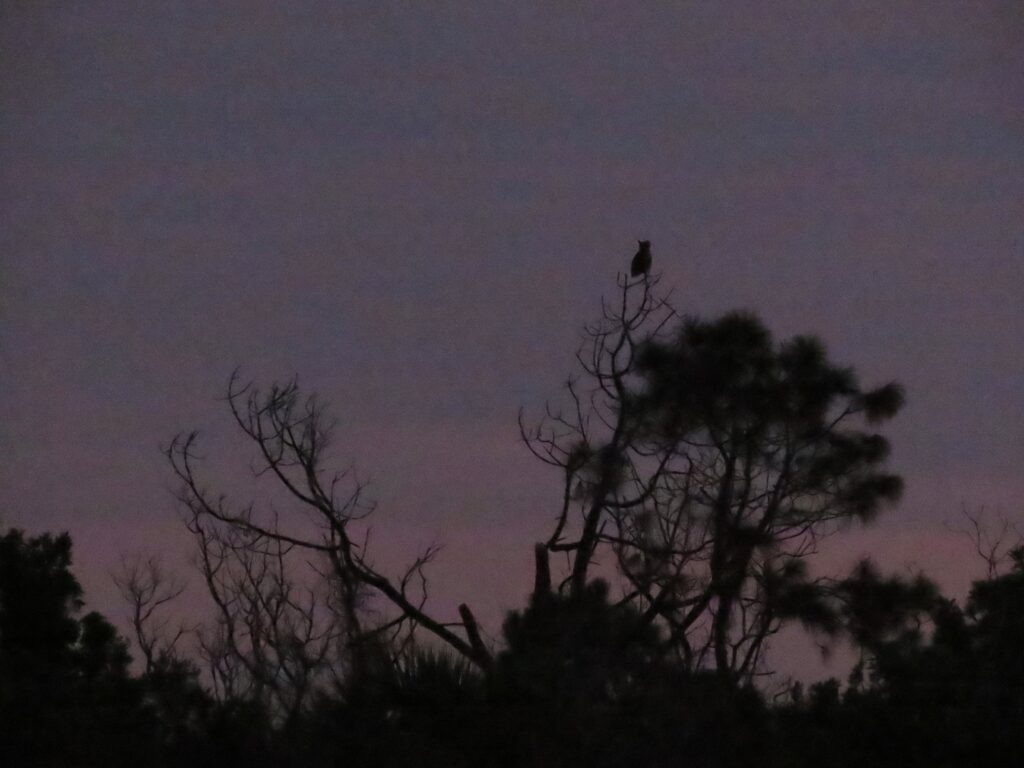
This week for Flora and Fauna Friday we have the haunting horned Hoot-Owl: the Great Horned Owl (Bubo virginianus).
The Great Horned Owl is our largest Owl and found in nearly every nook and cranny of the continental United States. This Owl is tall and stocky with a finely mottled plumage of grays, white, and rust. Large sulfur-yellow eyes are set wide and forward facing on a broad face bearing a disdainful to disinterested expression. From its temples arise its namesake horns, black and rounded tufts of feathers our Owl can raise or lower like eyebrows. On the other end of the Owl are fluffy feet bearing savagely hooked talons.
Of our four resident owl species, each has an analogue in the diurnal Falconiform raptors (Eagles, Hawks, and Falcons). The Barred Owl is but a subtler sunset Red-shouldered Hawk. The Barn Owl is a stockier and more horrifying Harrier. The Screech Owl is like a shrunken screaming Sharp-shinned Hawk. The Great Horned Owl is a merciless Eagle. They are the apex predator of the night sky. When the curtains of twilight draw shut, they wield air superiority like a silent surgical sledgehammer.
All our Owls have impressive night vision and exceptional hearing. They also have the power of silent flight, owing to serrated flight feathers that soften their swooping sounds. Great Horned Owls use these talents to hunt anything they please. Even birds bigger than themselves. Great Horned Owls hunt in a similar manner to Eagles. They use their considerable mass, wicked claws, and enhanced perception to tackle prey by surprise. The impact cripples and confuses prey, swiftly dissolving their defenses and leaving them open to a killing blow. A good chunk of the Great Horned Owl’s winter diet comes from wading birds and waterfowl. Ducks are a nutritious and delicious compact meal. Although plentiful, they are often hard to get a hold on. Wading Birds on the other hand are easy pickings but mostly bone and feather. Their lanky frame and slow flight makes them easy targets. Great Egrets are a special favorite here in the Lowcountry. Their habit of roosting over water in tree canopies and their bright white plumage makes them glow in the slightest moonlight. Great Horned Owls are also notorious for raiding bird nests and will snatch fledgling chicks, even Ospreys and Eagles, straight from under the beaks of their parents. Great Horned Owl pairs even make a hobby of stealing Bald Eagle nests for their own use. Throughout winter, breeding pairs will talk to each other with a short sentence of soft echoing hoots.
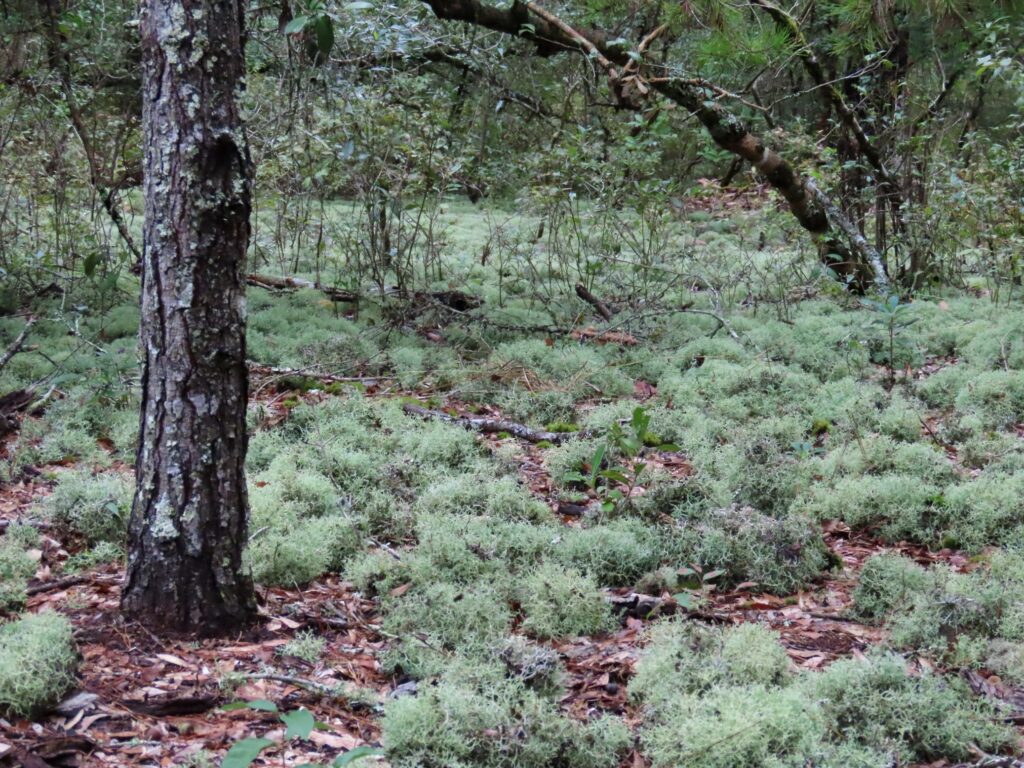
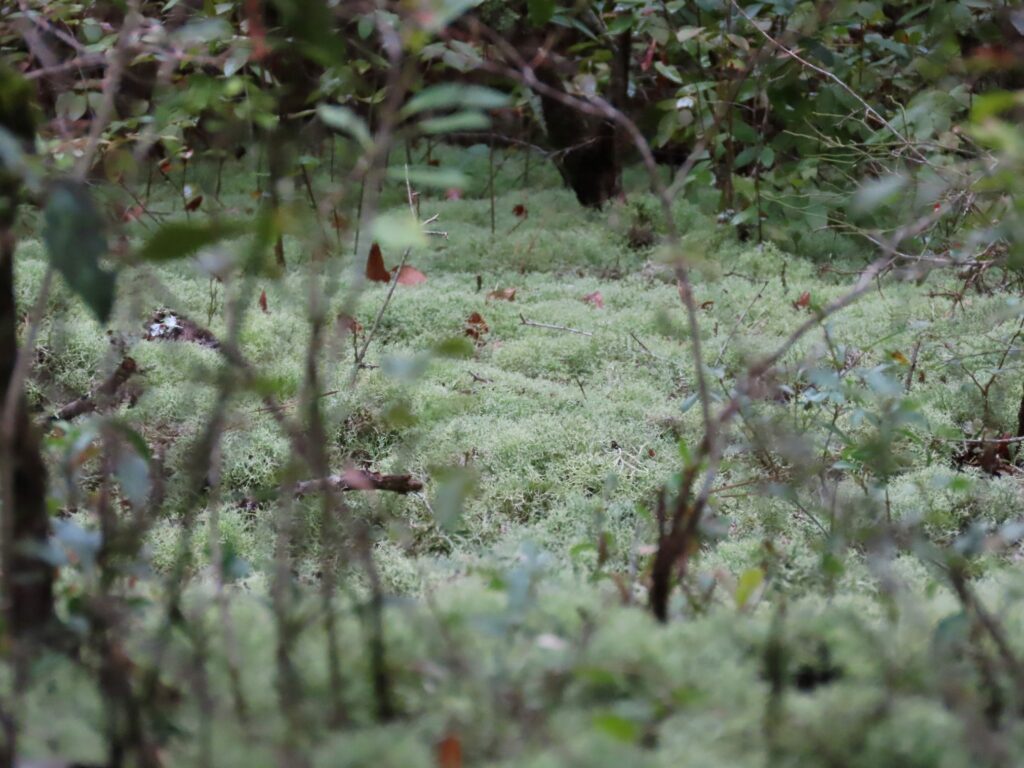
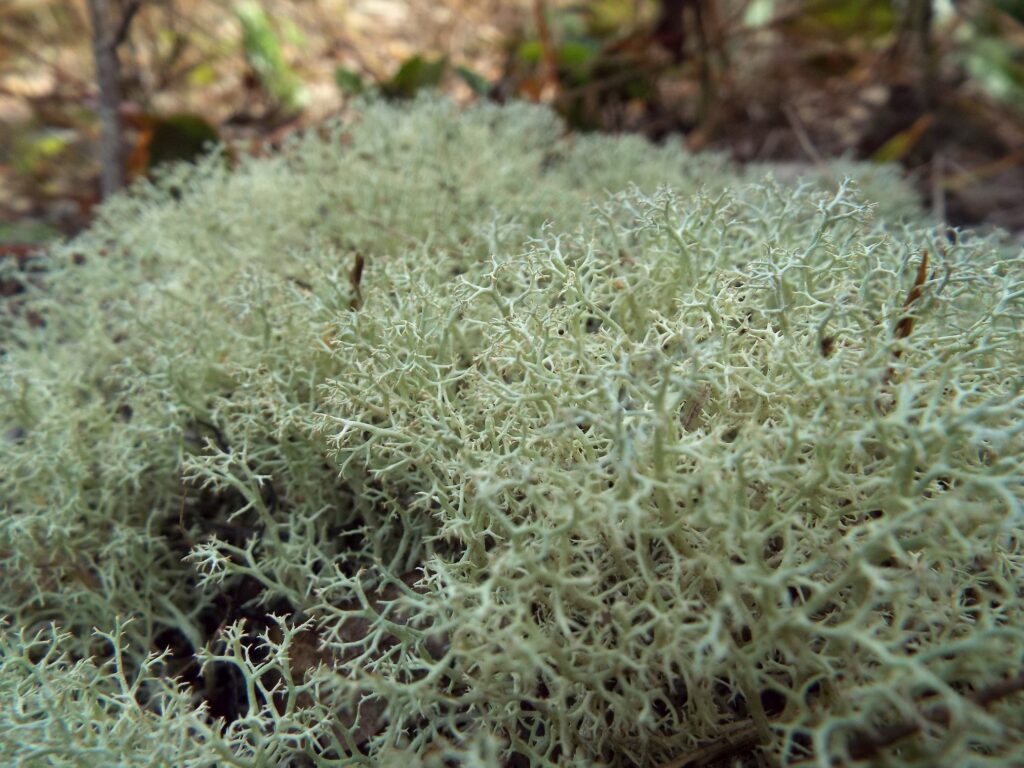
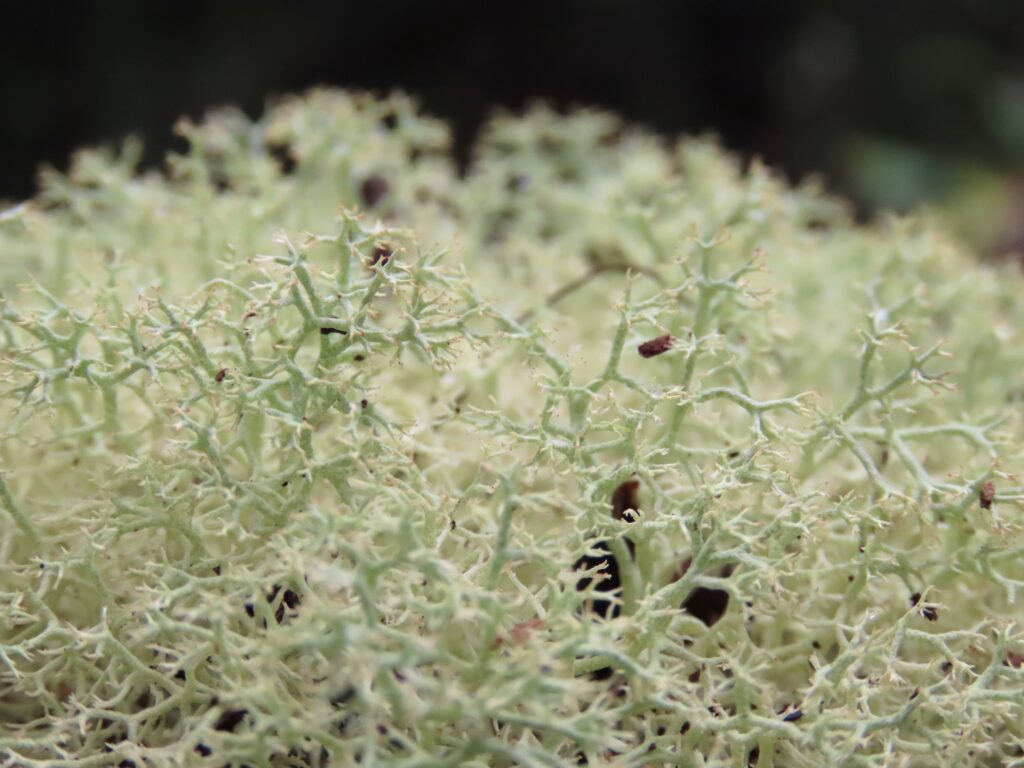
This week for Flora and Fauna Friday we have a spongy photosynthesizing fungus better known from the great white north but native to some of our more quintessentially Carolina biomes: Reindeer Moss, genus Cladonia.
Reindeer Moss is a genus of fungi found across the globe. There are many species in the genus but today we’re focusing on just the mat-forming species. This lichen grows in spongy blue-green mats. Like a root ball turned upside-down, their minute branches split and taper fractally into a foam-like frothy web of fungus. Reindeer Lichens exist in a plethora of biomes from the Reindeer grazed plains of the Canadian tundra to the fire razed savannas of the South Carolina Lowcountry. Since we’re here and not there, I’ll be talking about our local lichens.
As alluded, Reindeer Moss is commonly found growing on the patches of bare, sandy soil in our fire managed Longleaf Pine savannas. It’s also quite numerous on sandy ditch banks and other dry, nutrient poor soils where little else grows. Reindeer Moss does well here because of its special characteristics as a lichen. A lichen is not your ordinary ‘shroom, this fungus is something much different. Unlike the fungi we’re used to seeing, lichens do not live underground nor do they feed on detritus. Lichens photosynthesize. Well, to be more precise, Lichens are a compound organism. They are composed of a fungus and a colony of single-celled alga or cyanobacteria. The two live together in a relationship a little more advanced than traditional symbiosis, with the fungus being entirely dependent on the alga for food and the alga living entirely within the fungus. Because of this, lichens can grow anywhere there is light. However, unlike plants, the root-like hyphae and unique biochemistry of a fungus allow the lichen to obtain mineral nutrition from practically anywhere. Just like some non-vascular plants, they are very drought tolerant. Many lichens live on tree bark, rocks, or bare soil and rely on rainwater and alluvium for nutrients. Some can even dissolve rock to a limited extent. Reindeer moss is no exception. This allows it to, quite literally, carve out a niche where no plant can!

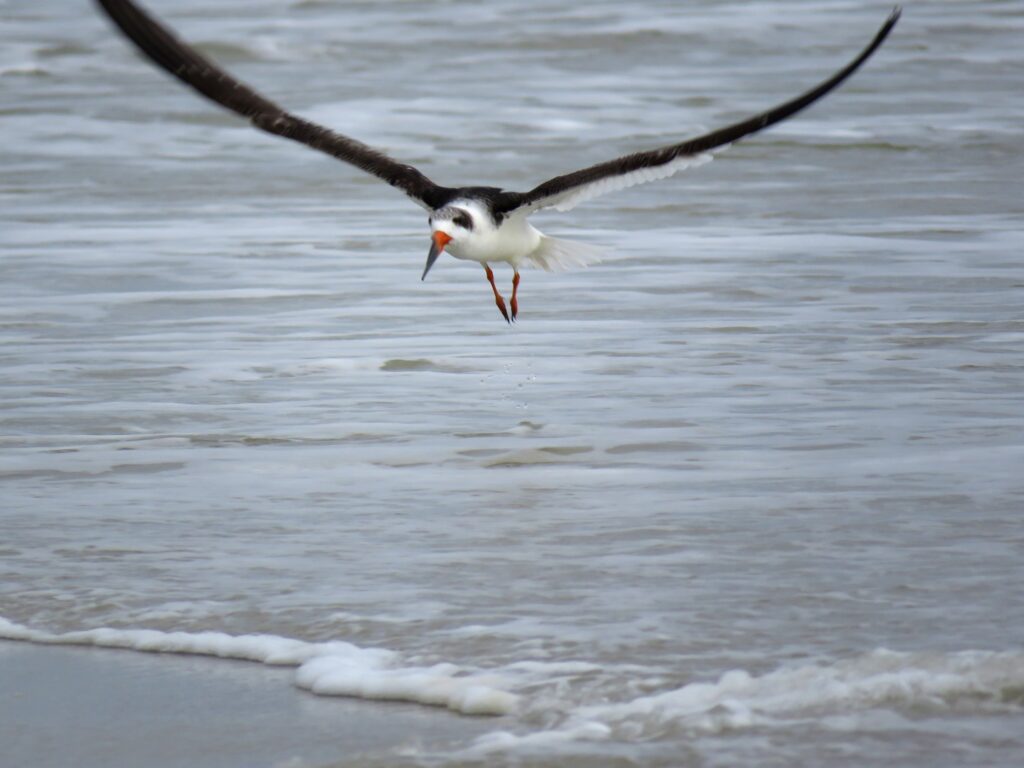
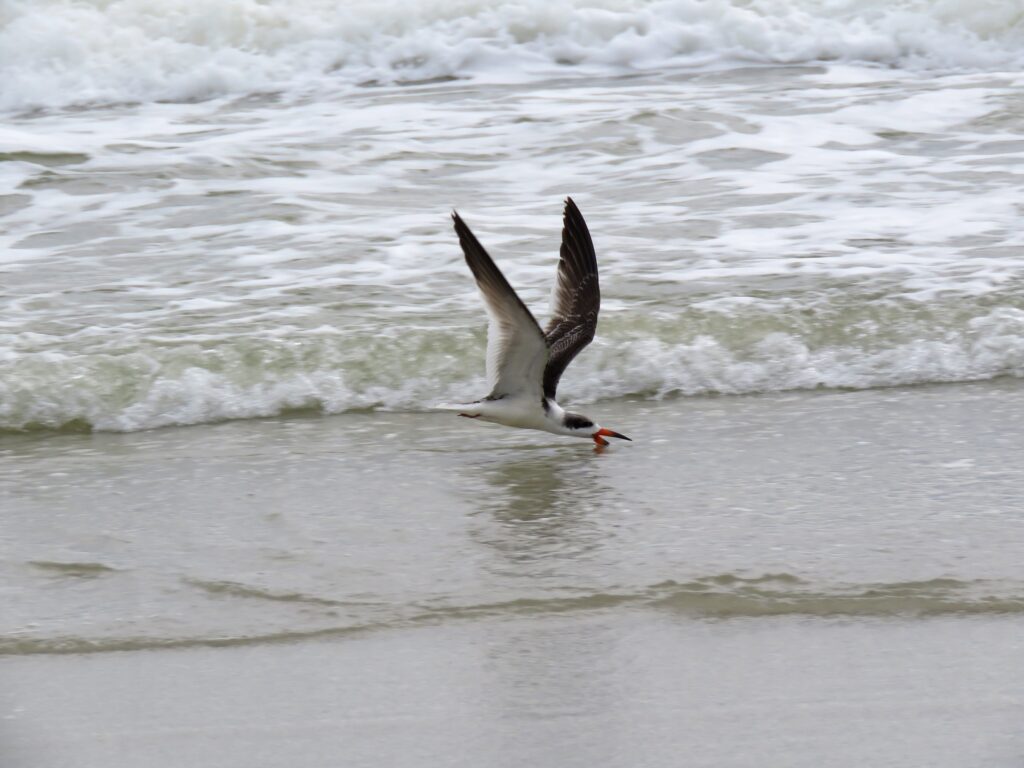
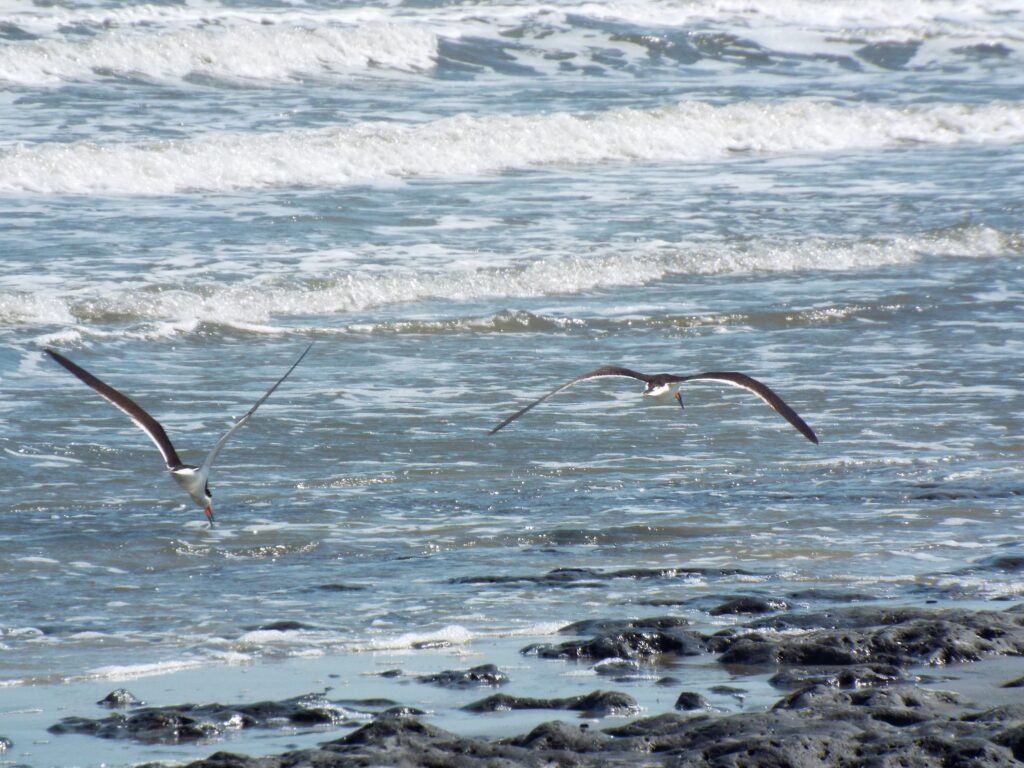
This week for Flora and Fauna Friday, we have the under-bite champion of the bird world: the Black Skimmer (Ryhnchops niger).
Black Skimmers are a slender member of the same family as Gulls and Terns, Laridae. Black Skimmers are a bird of monochrome pelage with a jet-black back and ice-white belly. This formal coat is accented by legs and bill of deep-orange. Their general body shape is sleek and narrow, much like a tern, but what stands them out from the crowd of sea birds is their beak. Black Skimmers have a long, blade-like bill that’s orange at the base and black towards the tip. What’s unusual is that their lower bill is nearly 50% longer than the upper, blunt like a butter knife at the tip, and thin as wire the whole length. The design is somewhere between sword and airplane wing. The upper bill is similarly strange yet less by comparison. This beak is the key to the Black Skimmer’s feeding strategy.
Black Skimmers are piscivorous. However, instead of plunge diving like a Tern or Pelican for their meals, they prefer to stay out of the surf. Black Skimmer fly flat, true, and swiftly mere inches over the surface of the water. As one levels out it opens wide to lower its rudder beak into the brine. That hydrodynamic shape divides the water as cleanly as the bow of a ship as the bird coasts over a creek. Its long elegant wings power the craft and steer it towards a disturbance in the surface of the water. Fast and silent they ambush their target blind. Their bladed bill broadsides a Killifish at breakneck speed. The scaly thing is wrenched upward on the inclined maw and fatally pinched between two scissor-like jaws. Black Skimmers feed not by sight but by touch, much like a Stork or Spoonbill, but in a much more thrilling manner. They’re common in coastal waterways where small fish school near the surface and they often rest perched on the beach.
This week for Flora and Fauna Friday we have an aggressive and expansive wetland plant critical to our Island: Black Needlerush (Juncus roemarianus).
Black Needlerush is a member of the Rush family, Juncaceae. Rushes are one of the big three “grass-like” families, along with the Sedges of Cyperaceae and Grasses of Poaceae. The quick trick to telling these three apart are their stems. Grasses have flat leaves, Sedges triangular stems, and Rushes tubular leaves. As we all know, biology is the study of exceptions to the rule. So this quick trick can get you quickly tricked, but it at least holds water for today’s Rush.
As stated, Black Needlerush looks similar to a grass but has tubular leaves. These perennial leaves are often three to four foot long and dastardly sharp. Walking unprepared into a sea of Needlerush is never a pleasant experience. Plants grow in bunches and spread laterally by rhizomes. Needlerush blooms in spring to produce an open, palm-sized cluster of mahogany-brown seed capsules. Black Needlerush is the other half of the tidal tag-team that makes up our salt marsh. Smooth Cordgrass tackles the low marsh and Black Needlerush takes the high marsh. Black Needlerush grows naturally in massively expansive single species meadows across sandy marsh lands and salt flats of the Lowcountry. Needlerush grows on higher elevations than Smooth Cordgrass but often in soils just as saline. It grows on the firm sandy substrate rather than the nutrient fluff that is pluff mud. Its perennial nature provides a more permanent home for our marsh birds and rodents during winter. Its tightly woven leaves create a natural sieve to filter and collect eroding soils and tidal flotsam as well as break apart storm surges and wakes.
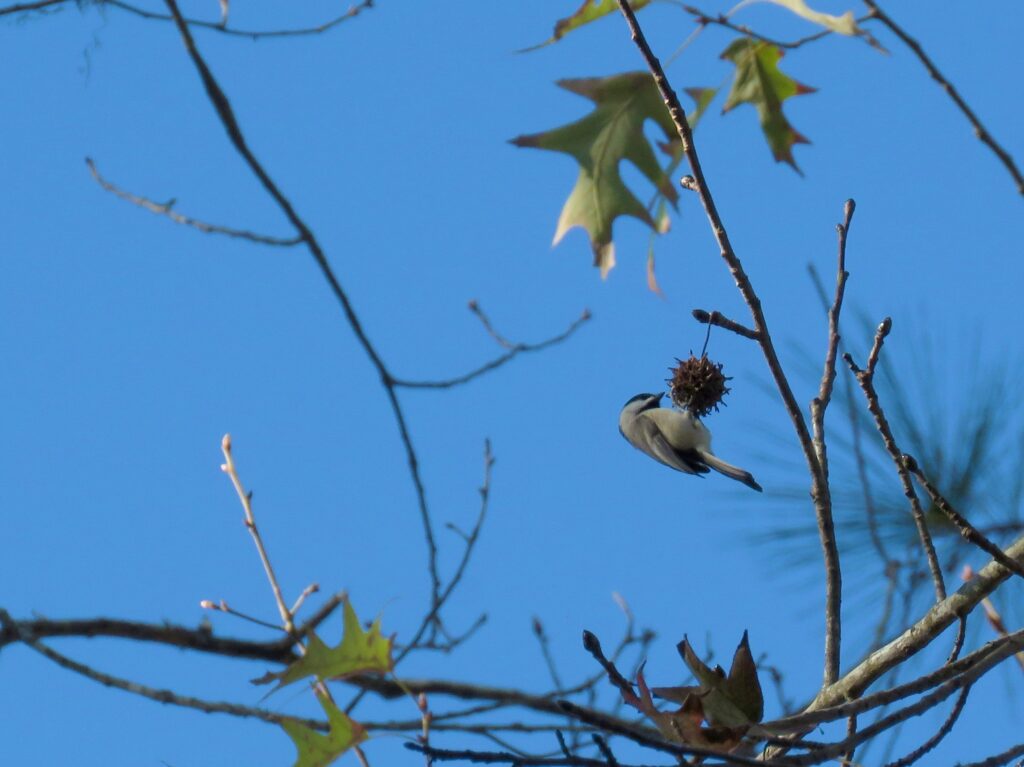
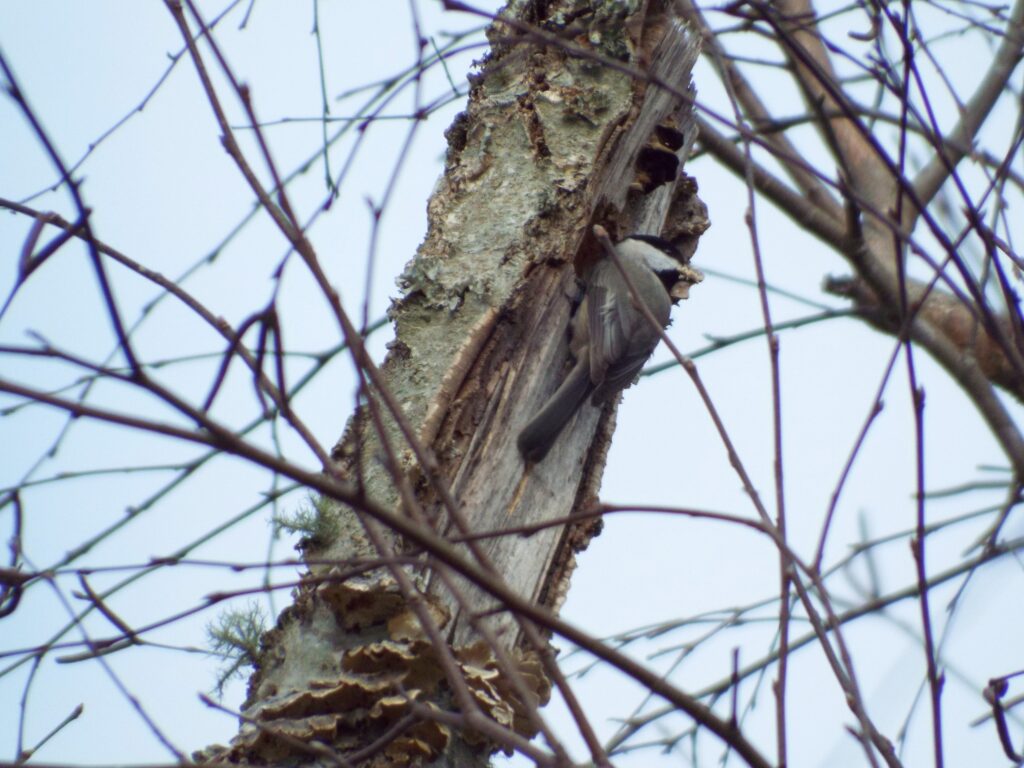
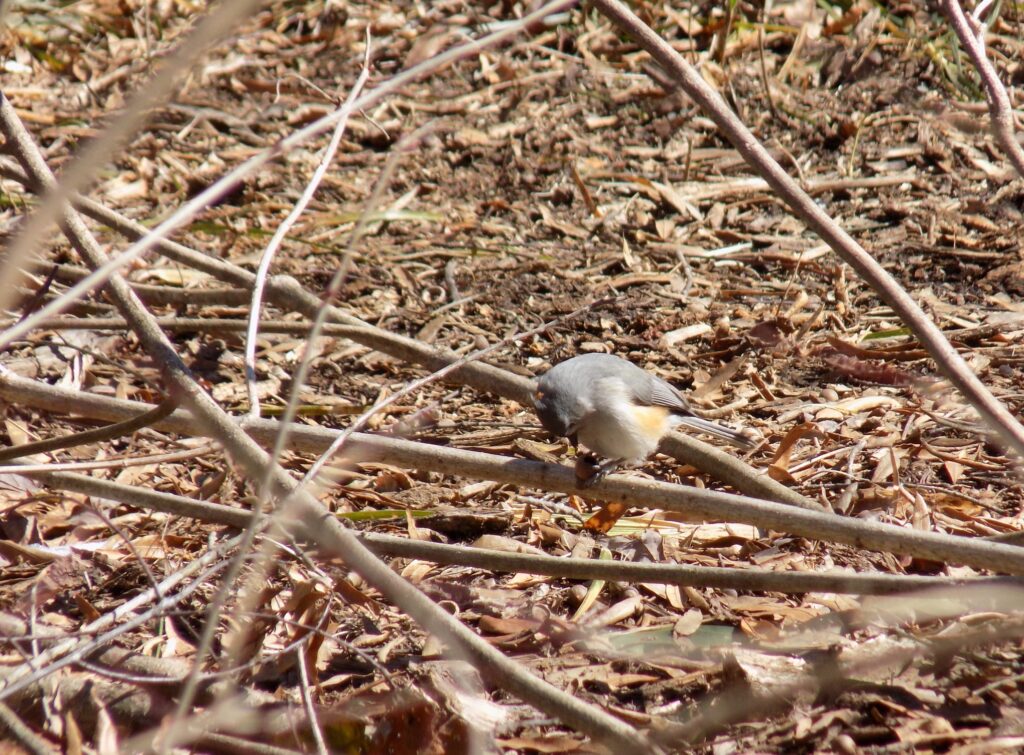

This week for Flora and Fauna Friday we have a pair of personable Parids: the Carolina Chickadee (Poecile carolinensis) and the Tufted Titmouse (Baeolophus bicolor).
Today’s Titmouse and Chickadee are both members of the Tit family, Paridae, and the only members of said family found here in the Lowcountry. Parids as a whole are small, vocal, social songbirds that inhabit woodlands. This is a description that fits our two birds perfectly. Chickadees and Titmice can be found living in small social colonies wherever trees abound throughout the state of South Carolina. They’re regular neighbors in the backyards of suburbia and staple feeder birds. Both eat a varied diet consisting primarily of insects and seeds.
The Carolina Chickadee is a minute monochrome bird. A small ball of clearly sectioned ivory, coal, and gunmetal with a short beak and round head, they’re hard to mistake for anything else. The Chickadee’s namesake alarm call of “Chick-A-Dee-Dee-Dee…” is far more slurred than the onomatopoeia leads you to believe but is nonetheless distinctive. The Tufted Titmouse is a small, subdued plumage songbird with a small pointed crest for a touch of flare. Their belly is a dingy white and their back an aluminum-gray with subtle chestnut flanks below their wings. Their “Peter-Peter-Peter” song can be heard ringing clearly through the hollow winter canopy. Both species are found throughout our woodlands on Edisto. Chickadees seem to me tolerant of planted pine and swamps and Titmice more plentiful in dense forests. The two species are non-migratory and nest in cavities. Chickadees and Titmice are curious creatures. They will often go out of their way to come fuss at any people or predators they feel are intruding on their turf. Sometimes drawing in a crowd of nearby songbirds who want to know what all the hubbub is about.
Resident Titmice and Chickadees are what are known as a nuclear species to bird watchers. During fall migration, mixed flocks of migratory songbird species move through the Lowcountry. They feed while snaking through the treetops on their journey south. Nuclear species, like our little Parids, attract these mixed flocks. Like tourists stopping to grab a bite and chat with the locals, these migrants collect around and tag along behind a Parid colony briefly before hopping back on the highway in the sky. Because of this, birders like to keep a watchful eye on flocks of Chickadees and Titmice in the hopes that a mixed flock will drop in to say hello.
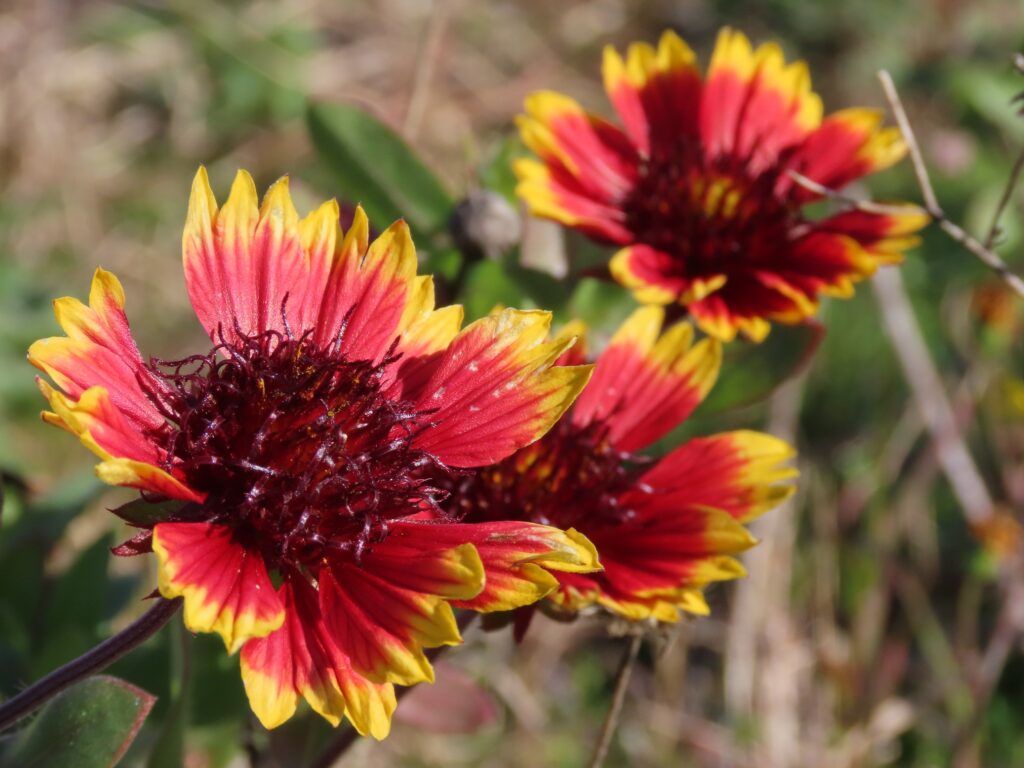
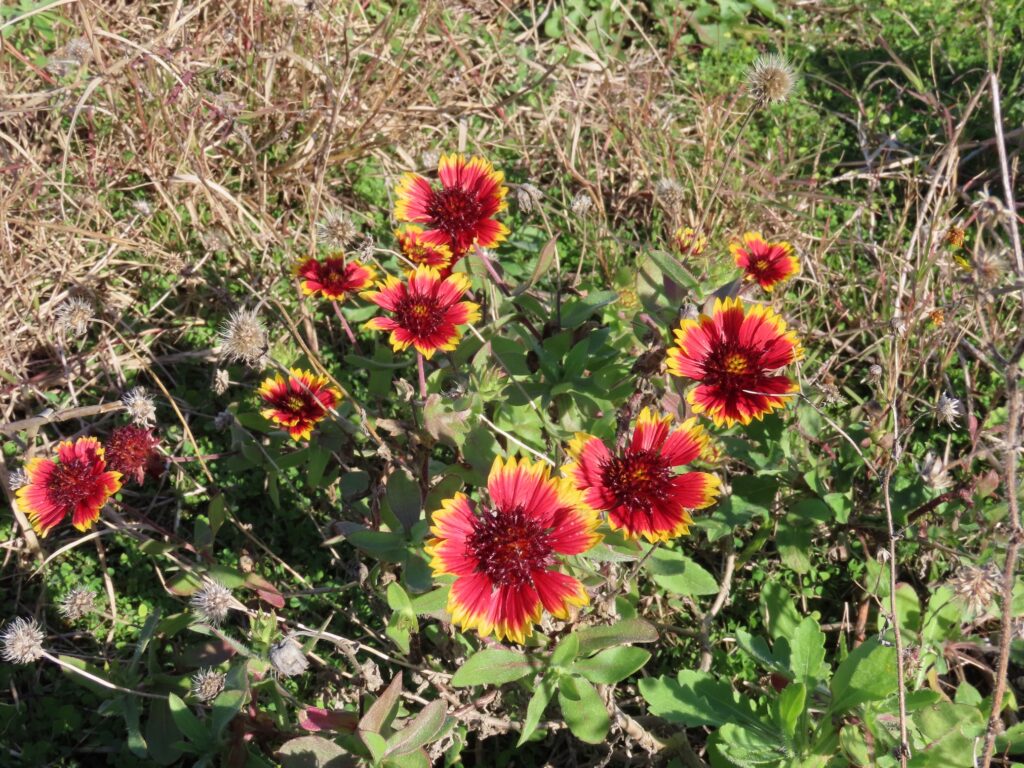
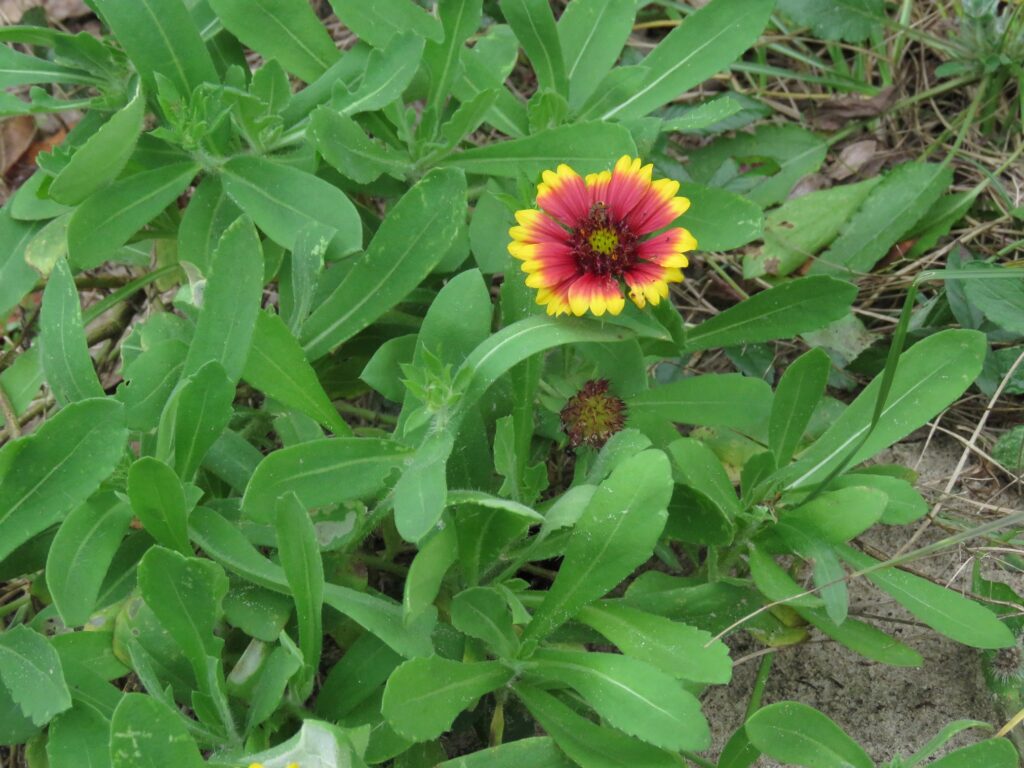
This week for Flora and Fauna Friday we have a carpeting coastal wildflower: Indian Blanket (Gaillardia pulchella).
Indian Blanket is a species better known generically as just Gaillardia. It’s a low growing wildflower in the Aster family, Asteraceae. It’s soft, seafoam foliage bubbles up from the sand beneath as it spills onto a dune side. Floating up between these leaves light burning pinwheels of flame. A roaring disc of color over a bleak landscape that hovers and flickers on the seabreeze. Indian Blanket is one of our few wildflowers so specialized for our sandy shores. It’s a common sight razing the lots and lawns along Palmetto Boulevard as it consumes the sand and flicks tongues of color into its own updrafts.
Gaillardia is a curious and carefree wildflower that appears to grasp no concept of the seasons. It blooms chaotically and constantly throughout the year and never rests but finally. It is truly neither annual nor perennial and seems to choose it’s time and place to perish of its own accord. Sometimes it sprouts in fall and blooms in spring, other times the opposite. Typically neither but never predictable. It is a statistical plant that must be spoken of in generalities and assumptions for looking at the individual for answers yields none of use. Although it places such emphasis and effort into its floral art it invites few visitors in for exchange. Scarce nectar and sparse pollen entice few but the most mundane of neighbors as their petals pyre and roar to our attention. It is a true artist in its field, absorbed and isolated in its own methods, reveling in the craft of its creation and seeking no approval of others. Its work is meant for its own joy and not for ours. What significance we gleam is but coincidence for it seemingly exists merely for the sake of it.
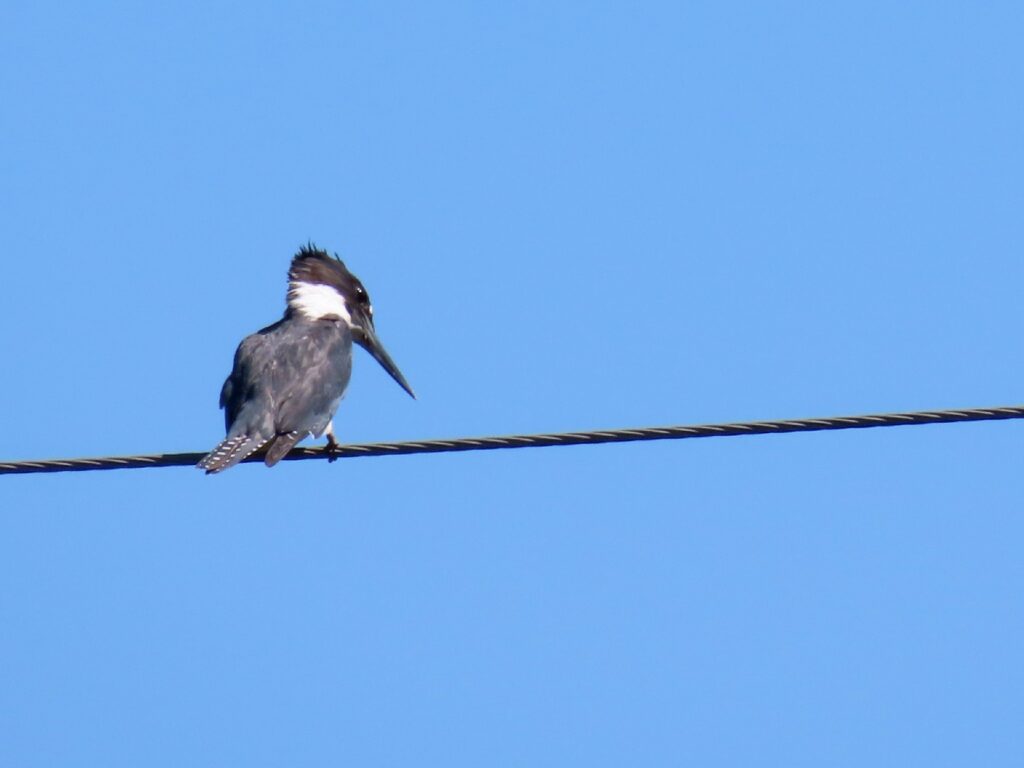
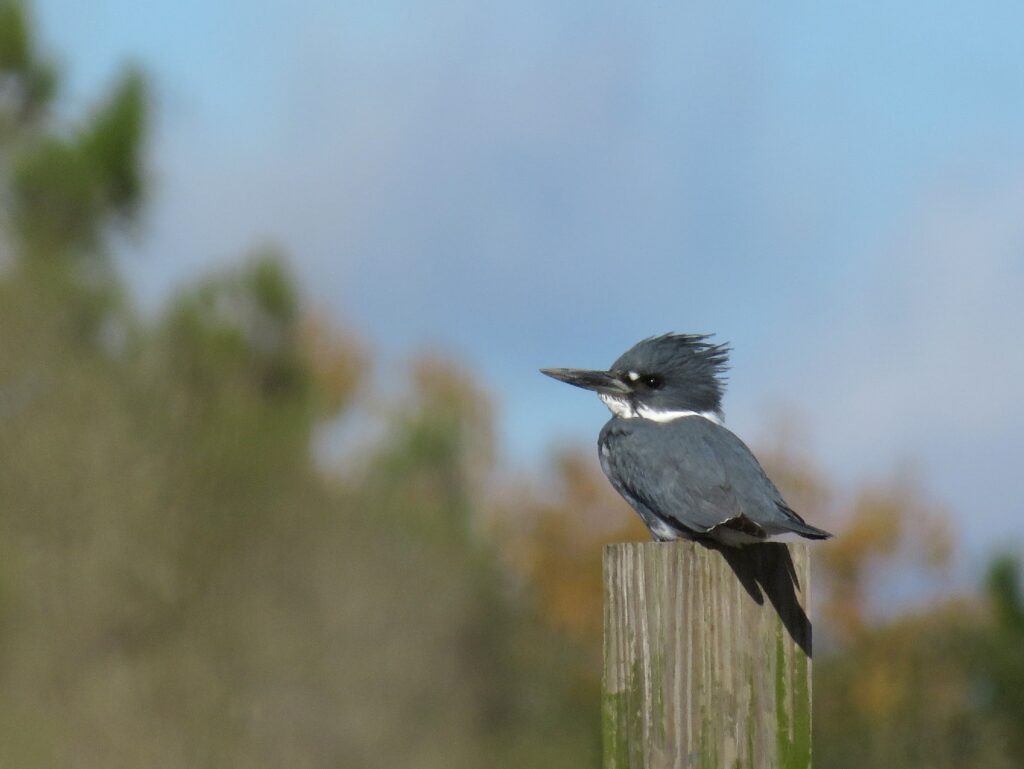
This week for Flora and Fauna Friday, we have a high-waisted, rattling, regal angler wearily watching us: the Belted Kingfisher (Megaceryle alcyon).
The Belted Kingfisher is a stocky, compact bird found throughout the continental United States. It’s the only member of the Kingfisher family with a substantial range in our country. They can be found in the Lowcountry for most of the year but vanish in spring only to return in mid-summer. Belted Kingfishers nest in caverns that they tunnel into the side of river bluffs. When breeding season rolls around, they mostly leave our relatively level coast to head for more exaggerated geology further inland.
Kingfishers are about a foot in length with a robust build, blade-like bill, and a tall cranial-crest of feathers. Their mantle and mask are a watery shade of aluminum-blue that wraps across the breast and extends down to the flight feathers. Their primaries and tail feathers are a slate-gray and checkered by bars of white. In contrast to their dark backs are their icy-white bellies. Like their fellow angler the Osprey, female Belted Kingfishers sport a ruddy-brown waistband across the upper belly. The call of our Kingfisher is a loud rattling cry of rapid, aggressive, low-pitched squeaks. They issue this distinctive call universally in response to all manner of disturbances, be they greeting a mate, defending territory, or alerting to danger. Belted Kingfishers are notoriously hard to approach but easy to spot and observe from a distance.
Belted Kingfishers are piscivorous. They eat almost exclusively fish. In our tidal creeks, the ever present Mummichog is most often their target. Kingfishers hunt by sight. They perch atop a tree limb, shrub, or dock and scan the water for anything fishy. When something catches their eye, they burst from their perch and ascend into a hovering flight above their target. They linger in the air for a moment before diving headlong into the surf. With a splash they split the water, stabbing or snapping their bill into any unsuspecting fish that crosses their path. Using their natural buoyancy, they pop back to the surface and clap their wings against the water to launch themselves back into the air, returning to its preferred perch to enjoy a meal with a view. Kingfishers swallow their prey whole. So they make sure to thoroughly wallop their unlucky catch against their perch before gulping it down, bones and all.